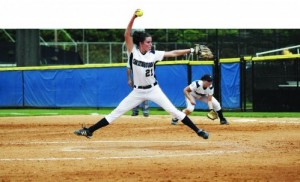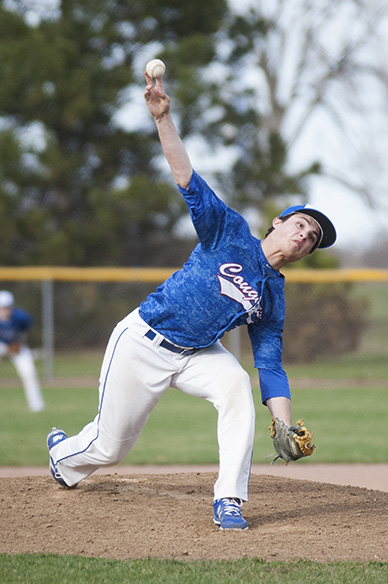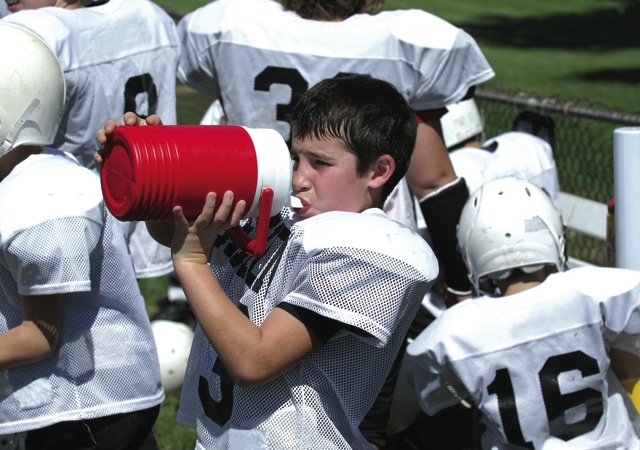SportsMed: Keeping the shoulder healthy
The importance of normal shoulder function is generally unappreciated until routine daily activities become difficult to perform.
Has your star pitcher ever indicated having felt something give in the shoulder while pitching in a game but was able to finish? The next morning, was the inability of that player to raise the arm above the shoulder a surprise? It’s disappointing for a pitcher to train all offseason, then have the current season derailed when the athletic trainer thinks the injury is significant enough to be seen by an orthopedic surgeon.
 Injuries to a shoulder can range from a simple contusion to significant structural damage that may require surgery. Are there ways to prevent a shoulder injury from happening? Most athletes focus on the big picture, but attention to detail can make the difference when it comes to preventing a shoulder injury. A conditioning program that includes proper strengthening exercises, proper stretching and optimal frequency can enhance the shoulders resistance to forces that would otherwise produce an injury.
Injuries to a shoulder can range from a simple contusion to significant structural damage that may require surgery. Are there ways to prevent a shoulder injury from happening? Most athletes focus on the big picture, but attention to detail can make the difference when it comes to preventing a shoulder injury. A conditioning program that includes proper strengthening exercises, proper stretching and optimal frequency can enhance the shoulders resistance to forces that would otherwise produce an injury.
The role of the rotator cuff is critical during performance of overhead motions, as the gleno-humeral joint (shoulder) often moves at a high velocity and is subjected to extremely high loads.
The rotator cuff consists of four muscles that are responsible for the control of motions that rotate the shoulder — internally and externally. Both concentric and eccentric muscle contractions are required to maintain shoulder stability during the various phases of throwing, which involve both acceleration and deceleration of the arm.
Concentric, eccentric muscle contractions
A concentric muscular contraction occurs during the upward-lifting phase of a weight-training exercise. During this phase, the muscle shortens as it contracts.
An eccentric muscular contraction occurs during the lowering (negative) phase of the exercise. During the eccentric phase, the muscle is still contracted, but is lengthening.
During throwing, the external rotators must contract eccentrically to maintain shoulder stability as the arm moves forward and the shoulder rotates internally at a velocity as great as 7,000 degrees per second. The specific muscles that need to be strengthened eccentrically are the infraspinatus and teres minor (posterior rotator cuff).
Research has demonstrated that proper weightlifting technique during the eccentric (lengthening) phase builds strength much more efficiently than the work performed during the concentric phase. Examination of force-velocity relationships demonstrates that muscle tension is always greater for eccentric work and the difference between eccentric and concentric muscle tension increases as movement velocity increases.
Simply stated, eccentric work involves greater muscle tension, thereby creating a greater stimulus for muscle strengthening. The drawback is that eccentric training produces more muscle soreness than concentric rotator cuff training, making this type of shoulder training most appropriate during the offseason.
Considerations for effective eccentric rotator-cuff training include the following five points:
- A partner should actively assist the upward phase of the lift.
- The athlete must slowly lower the weight through the eccentric phase of the exercise. A good rule of thumb is to utilize a five-count while the weight is lowered through the eccentric phase.
- Because eccentric muscle contraction generates a high level of muscle tension, the number of repetitions performed per set should be relatively low. Ample rest time between sets should be allowed for muscle recovery.
- The amount of weight used must be limited to that which the athlete can control during the lowering motion.
- Eccentric exercises should only be performed two or three times per week, with at least 48 hours of rest between training sessions.
Stretching

The benefits of stretching are often overlooked. The overhead throwing motion often results in limited internal rotation of the shoulder. This restricted motion may lead to injury to the labrum and rotator cuff, which are subjected to high loads during the follow-through phase of throwing. Over an extended period of time, posterior shoulder tightness can adversely affect throwing mechanics.
Stretching has been shown to increase internal rotation of the shoulder, thereby reducing the amount of posterior shoulder tightness and decreasing the force imposed by the high-velocity throwing motion.
The sleeper stretch provides a simple and effective approach to increase internal rotation. The stretch is performed while lying on any surface on the side of the arm the athlete wants stretched. The arm is positioned at a 90-degree angle to the body. With the opposite hand, the athlete pushes the wrist down toward the surface until the stretch is felt. The athlete is instructed to hold the position for 30 seconds for three repetitions. The sleeper stretch can be performed prior, during (e.g., between innings) and after activity to prevent posterior shoulder tightness and maintain shoulder mobility.
Neglecting these considerations increases the likelihood of a pitcher developing shoulder symptoms over time, which may ultimately have an adverse effect on performance and could lead to a loss of playing time. Proper emphasis on maintenance of internal shoulder rotation and eccentric strength of the rotator cuff muscles can increase the probability of injury avoidance and optimal performance.
Gary Wilkerson, EdD, ATC; Marisa Colston, PhD, ATC; and Todd Bullard, MS, ATC, are from the Department of Health & Human Performance at the University of Tennessee at Chattanooga.





